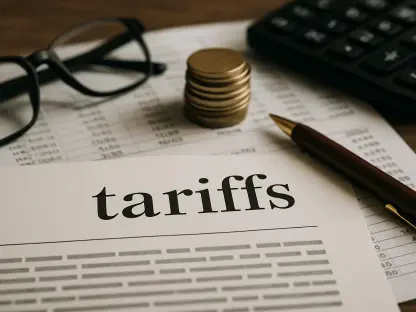The recent upheaval in Cuba’s informal currency market has caught the attention of economists and citizens alike, as the U.S. dollar surged to 382 Cuban Pesos (CUP), while the Freely Convertible Currency (MLC) experienced a decline to 255 CUP. Amid this fluctuating landscape, the euro maintained an unprecedented level at 420 CUP. These developments mark the end of a transient stability period and emphasize the inherent volatility in Cuba’s unregulated trading environment. The duality of the official and informal exchange rates not only complicates the nation’s economic structure but also accentuates wealth inequality, making financial planning increasingly challenging. Discussions at various forums, including the recent ANEC Congress, highlighted Cuba’s intention to move towards a more dynamic exchange rate system in 2025. However, significant challenges persist due to enduring foreign exchange shortages and parallel economic issues that have curtailed immediate reformative actions. This economic fragility serves as a reflection of broader systemic disparities, fueling debates about the roadmap to a functional currency system.
Fragmented Economic Landscape
Cuba’s intricate currency system is marked by several conflicting exchange rates, each presenting distinct challenges. Officially, businesses transact at 24 CUP to the dollar, whereas public banking institutions operate on a rate of 120 CUP, and the informal market dominates at about 380 CUP per dollar. These differing rates complicate everyday transactions and create a quagmire for economic efficiency and transparency. As a result, the economic landscape has become increasingly distorted, compelling state administrators and independent economic analysts to seek feasible solutions to harmonize these anomalies. The multiple rates exemplify the lack of a coherent pricing system, which, in turn, perpetuates fiscal uncertainty and places considerable strain on citizens and businesses trying to navigate this fragmented ecosystem. Implementing a singular exchange rate could potentially alleviate some of the pressure, but the transition process poses risks of volatility that Cuba’s economy may not be prepared to absorb.
Cuba’s economic narrative is further colored by state economic authorities describing the current exchange system as distortive. State-run industries and enterprises grapple with currency issues that restrict international trade and limit access to essential goods. These financial pressures extend their reach into everyday life, impacting the cost of living and straining family budgets. The dual existence of state and informal markets exacerbates this problem, as differing price levels worsen the divide between financial accessibility and fiscal policies. As Cuba’s leadership considers measures to unify these disparities, discussions often point to the necessity for structural adaptations that could help balance the scale. Such efforts are critical if Cuba chooses to embrace a functional exchange model that supports both state-managed enterprises and the burgeoning private sector, ensuring an equitable transition to a sustainable economic structure.
Proposed Reforms and Expert Opinions
Recent deliberations in Cuba underscore the suggestion to delay implementing a floating exchange rate until the landscape stabilizes sufficiently to withstand potential volatility. During the ANEC Congress, Economy Minister Alejandro Gil highlighted that while a flexible exchange model remains a long-term goal, current shortages of foreign currency and essential goods present overwhelming challenges that prevent immediate reforms. This delay is seen as a protective measure, both for the state and individual economic actors, against sudden inflationary spikes that could destabilize financial planning and economic growth. Nevertheless, patience is required as such a strategic pause allows policymakers time to adjust frameworks that will accommodate future transitions more seamlessly than a rushed approach.
Economists like Pavel Vidal and Mauricio de Miranda provide vital analyses, drawing on global precedents while also considering the unique characteristics of Cuba’s centralized economy. Vidal critiques the absence of a historical precedent within Cuba that supports the implementation of a true floating rate, identifying an underlying necessity for trial and error in understanding how such a system would function in a socialist economy. Meanwhile, de Miranda advocates for enabling private sector exchange points to merge with state systems under regulation, fostering a more inclusive monetary environment. Such insights form a collective academic dialogue, inviting broader participation in hypothesizing viable resolutions without necessarily proposing definitive answers. The collaboration between theorists and practitioners remains crucial in decoding Cuba’s prevailing fiscal puzzles, emphasizing systemic and inclusive reforms as foundational solutions to transcending the nation’s economic hurdles.
Paths to Monetary Reform
Cuba’s informal currency market has recently drawn significant attention as the U.S. dollar soared to 382 Cuban Pesos (CUP), while the Freely Convertible Currency (MLC) dipped to 255 CUP. In this fluctuating scenario, the euro held an unprecedented high of 420 CUP. These shifts underscore the volatility inherent in Cuba’s unregulated exchange market and mark the end of a brief period of stability. The duality between official and informal exchange rates adds complexity to Cuba’s economic structure, highlighting issues of wealth disparity and complicating financial planning. At forums like the ANEC Congress, discussions have centered on Cuba’s plan to adopt a more dynamic exchange rate system in 2025. However, numerous challenges such as persistent foreign exchange shortages and other economic constraints hinder swift reforms. These economic vulnerabilities reflect larger systemic issues, sparking debates around achieving a stable currency system and laying a foundation for economic growth and equality.









